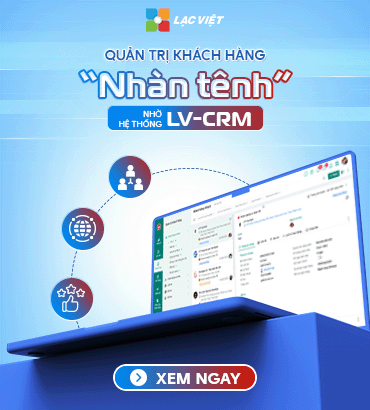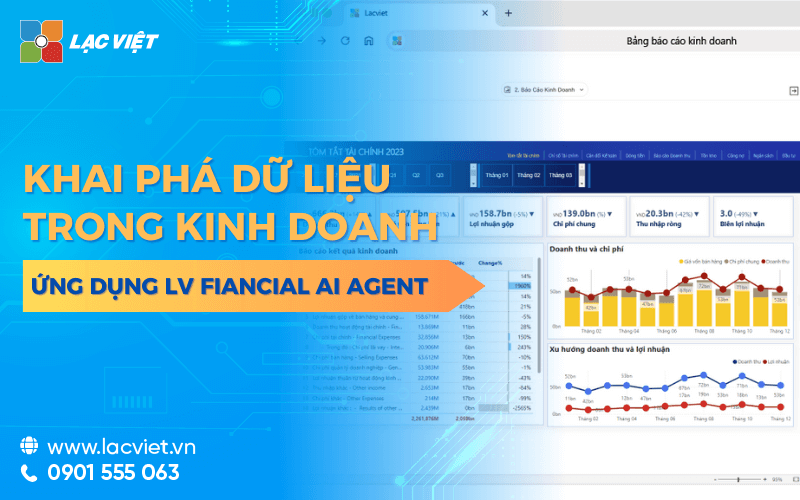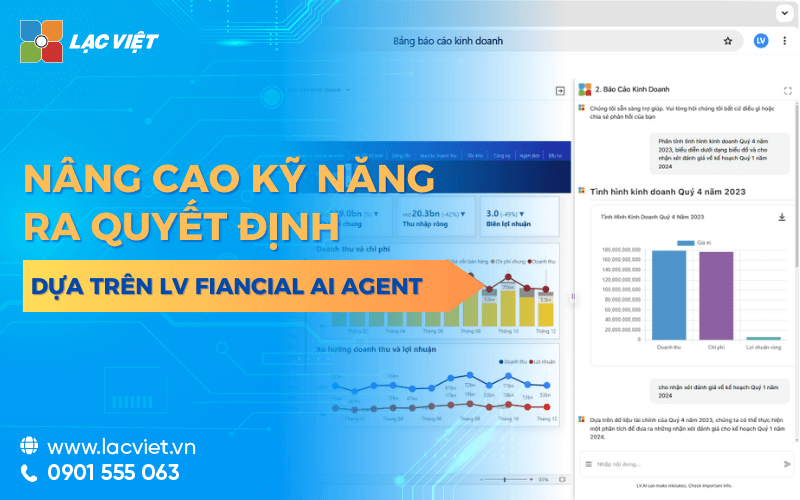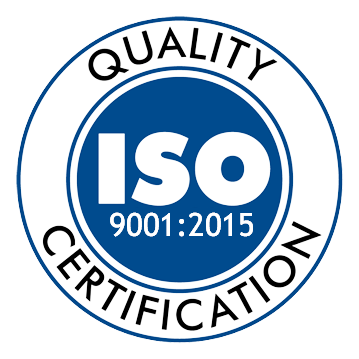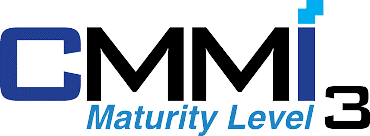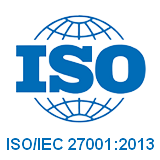The business market is constantly transforming, change management, not merely adjust and adapt, but also the strategy to help businesses step through every challenge. To lead change successfully, understand and apply the management model fit is essential. This article Lac Viet Computing will provide 8 important steps along 4 models effective in change management to help business sustainability in the competitive environment current.
1. Change management what is?
Change management (Change Management) is the process of planning, implementing and controlling the changes in an organization to achieve those goals.
This is an important aspect in business management to help the organization adapt to new conditions, optimize performance and improve competitiveness in the market.
A report of McKinsey & Company for know, about 70% of change projects in business do not achieve results as expected, and one of the main causes is due to the lack of change management effectiveness. This shows the necessity of planning and implementing change management, the way to minimize the risk of failure.
Three levels of change management:
- Individual level: Every individual has different reactions when faced with change. Change management at this level requires understanding of psychological motivation and the factors that influence employee behavior. The goal is to assist individuals to overcome barriers, anxious to have them ready to accept participation in the change process.
- Levels of organization: At this level, change management, focus on the group or department in the organization. Managers need to build solidarity and to promote the participation of all team members to achieve common goals.
- Enterprise level: This is the master level, most related to the whole system of the organization. Change management at the enterprise level, including the strategic planning, adjust the organizational structure, work processes, corporate culture to fit with the new goals.
2. Embrace change through pattern VUCA
VUCA stands for Volatility (volatility), Uncertainty (Not sure), Complexity (Complex), Ambiguity (ambiguous), is a term that describes the business environment, modern, there are many fluctuations occurred and elusive because there is more change to happen.
- Volatility (volatility): Volatility refers to the changes cannot be predicted in the business environment. Factors such as technological change, market fluctuations, customer demand can generate large fluctuations. To deal with the volatility, enterprises need to develop flexibility in strategy, process, ensuring the ability to respond quickly to unexpected changes.
- Uncertainty (Not sure): Is the lack of clarity about the future, difficulty in predicting change. In the environment VUCA, businesses are often faced with the incorrect information, making decisions becomes difficult. To manage uncertainty, organizations need to build the ability to collect and analyze data, and maintain flexibility in strategy.
- Complexity (Complex): Complexity related to many factors intertwined, dependent, impact each other in a system. In business, the complexity may stem from the diversity of the market, supply chain, law, etc. To solve the complex business needs of building a structure, optimal organization, ensuring clarity of roles, responsibilities, enhanced coordination between the parts.
- Ambiguity (ambiguous): Environment VUCA often contains many ambiguous elements, events can be interpreted in many different ways. To minimize ambiguity, enterprises need to build an organizational culture of openness, encourages creativity, provides tools to employees can handle information effectively.
3. Morphology of change management
Depending on the goal and scope, the change in business can be divided into three morphological key: change grow, change, transition, change switch.
3.1 change development (Developmental Change)
Change development is focused on improving processes, methods of working current without changing the basic structure, organization, or business strategy. The goal of developmental change is to improve performance, optimize the operation of existing and strengthen skills for employees.
3.2 change transition (Transitional Change)
To change the transition is the transition plan, which processes, systems, or organizational structure is to replace or reform. Change the forwarding often more complex developmental change because it requires businesses to not only adjust the working methods, but also to rebuild a part or the whole system works.
Example of forwarding changes include the switch from system to manage customers, old to new CRM system, merge the two departments into a new unit, or change the production process to apply the more modern technology.
3.3 change switch (Transformational Change)
Change switch is extensive changes and breakthrough most, affect the entire structure, strategy, culture, and goals of the organization. Change is often driven by the change in the business environment, such as the appearance of new technologies, changing markets, or changes in business strategy of the company.
Example of changing the switch, including the switch from business model traditional to digital business, change the business strategy to adapt to the economy of.
4. Models of change management
4.1 Model ADKAR
Model ADKAR help managers focus on the individual in the process of change, ensuring that all staff are aware, willing to engage in the change in an effective way.
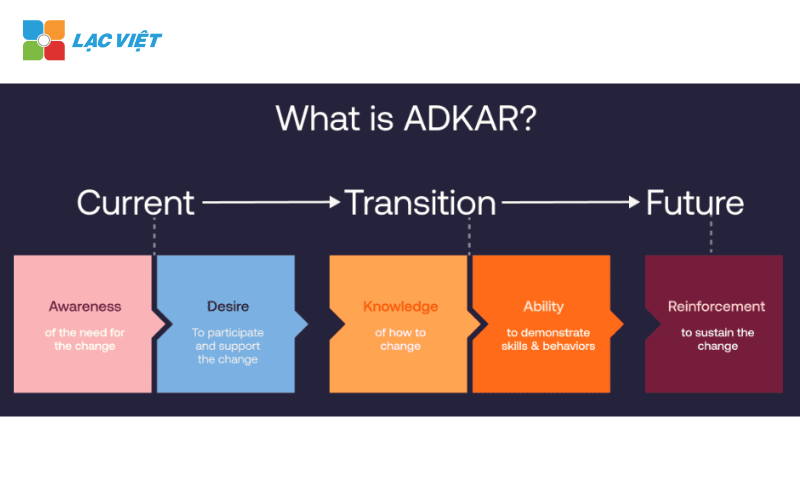
- Awareness (awareness): This is the first step to help employees understand why the change is necessary.
- Desire (Desire): Desire to participate and support the change factor is related to the motivation of staff. Business need for clear communication about the benefits of the change, both at the organizational level and the individual.
- Knowledge (Knowledge): include the provision of information, training and instructions to employees understand the processes required to make the change.
- Ability (Ability): Is the stage where employees apply the knowledge learned into practice. Businesses need to provide tools and support to employees can perform.
- Reinforcement (Reinforced): Is the last step, focus on ensuring that the change will be maintained and continue to grow in the future.
4.2 Model Kurt Lewin
Model Kurt Lewin help businesses understand the importance of the preparation, deployment, and reinforce the changes, which ensure the changes take place smoothly.
- Unfreeze (Defrost): This is the stage of preparation for the change by breaking the process, old habits.
- Change (change): this Stage consists of the deployment plan, new processes and ensure that all employees clearly understand the roles and responsibilities of yourself in the process of change.
- Refreeze (freeze): After the changes have been deployed, enterprises need to strengthen the
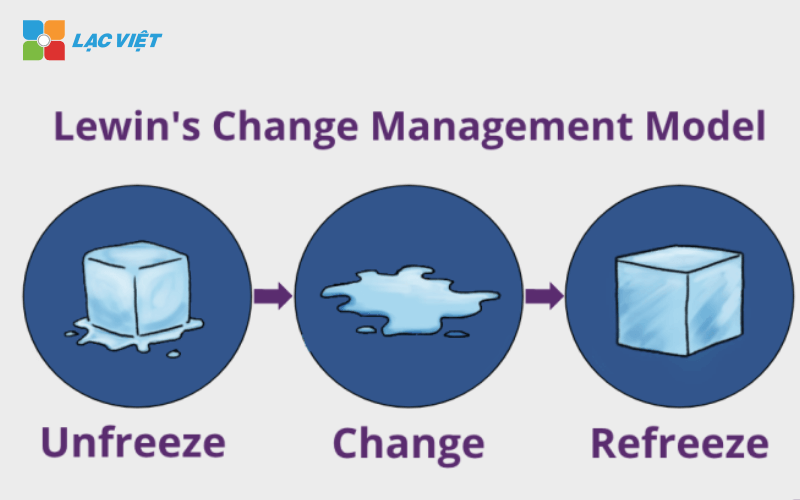
4.3 Model McKinsey 7S
Model McKinsey 7S emphasize seven elements ensure the change is successful. When one element changes, other factors should also be adjusted to maintain the balance efficiency.
- Strategy (strategy): action plan to achieve long-term goals of the organization.
- Structure (structure): structure, organization, include how to divide the departments role in business.
- Systems (System): The processes, systems that organizations use to run daily operations.
- Shared Values (shared value): The core values and culture that organizations pursue.
- Style (Style): leadership Style, management, employees.
- Staff (hr): human skills and capacity of staff in the organization.
- Skills (Skills): professional competence and skills needed to achieve goals of the organization.
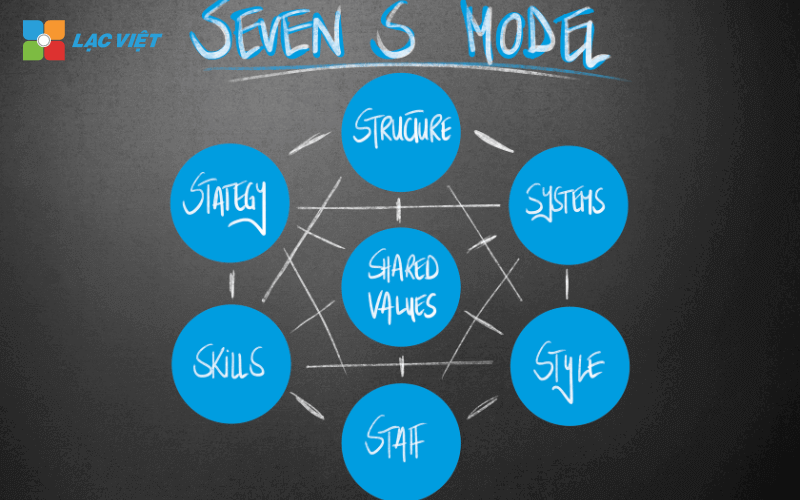
4.4 Model Bridges Transition
Model Bridges Transition developed by William Bridges, focusing on psychological aspects of change and the way that human beings undergo the process of conversion. This model divided the conversion process into three stages:
- Ending: This is the stage where employees faced with the abandonment of familiar things. This stage is often accompanied by feelings of loss.
- Neutral Zone (neutral Zone): Is the period in which employees are moved from the old to the new one.
- New Beginning (new beginning): the final Stage, when employees begin to accept with the change. They build the confidence, the motivation to start work in a new environment.
5. Process 8 step change management for business
Change management is a complex process that needs to be done systematically to ensure success. Process 8 steps of John Kotter is one of the methods of change management effectiveness.
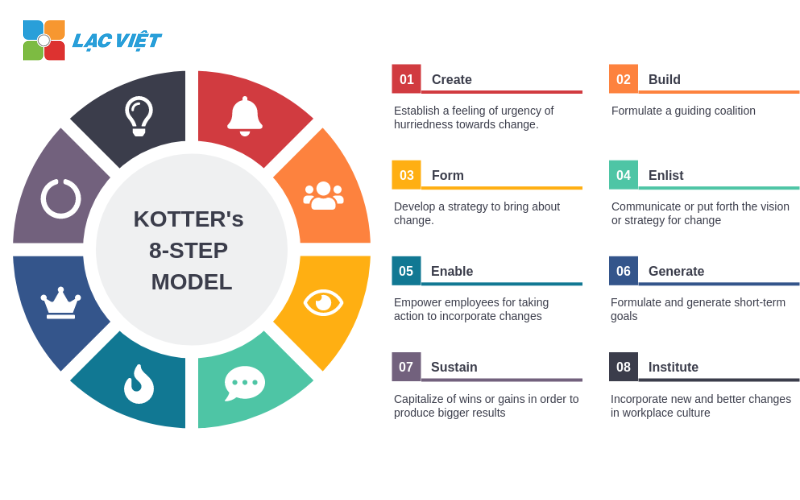
Step 1: Create urgency
To start the process of change, it is important to create a sense of urgency and clear awareness about the need of change. This can be done by analyzing the market, competitive environment, identify the potential threats or opportunities if business doesn't change.
Step 2: building the leadership team changes
A group leader is reputed to be the key factor to change management success. This team should include individuals who have influence in business, have leadership skills, have the ability to inspire employees.
Step 3: develop vision and strategy
A clear vision will help guide the process of change that the business want to achieve. The vision should help employees clearly see the benefits of the change for themselves and the organization.
Step 4: communicate the vision
Effective communication is the key to staff understand and support the change. Businesses need to convey strategic change in a clear, consistent through many different channels such as group meetings, emails, newsletters, internal... in Addition, the leader should always listen to feedback from employees, answer questions, provide timely information to build trust.
Step 5: remove obstacles
In the process of change, businesses can encounter many obstacles from the process, organizational structure, or even from the individual does not consent. Leaders need to actively identify, remove these obstacles to ensure that the change process goes smoothly.
Step 6: Gain achievements the short term
To maintain momentum during the change, businesses need to acknowledge the achievements. The results achieved in the short term not only help demonstrate the effectiveness of the change but also motivate employees continue to support the process.
Step 7: maintaining the change
After achieving early success, businesses need to continue to maintain and expand the change. Leaders need to constantly review the results, adjust the strategy if needed, encourage innovation, to ensure not only stop at the early achievements but also strengthened sweeping across the organization.
Step 8: Consolidation, change in corporate culture
The final step is to change management success is to ensure that the changes made are strengthened and become a part of the corporate culture. This can be done by adjusting policies, procedures, evaluation system to reflect the new changes.
6. Trend apply technology to change management
The application of technology has become an inevitable trend to change management in organization. Technology not only helps to optimize the operation process, but also the connection between the parts, creating a solid foundation for the change of business. The application of technology solutions to help businesses enhance management efficiency and quickly adapt to the fluctuations of the market.
Solutions to modern technologies such as software enterprise management is the organization widely used to support the process of change. Software, LV-DX of Lac Viet is a typical example about technology solutions to help manage changes in the business.
- LV-DX Collaboration: Provides features to manage tasks, projects, documents, workspace creation of enhanced communication, contact information, every business operating in the organization.
- LV-DX People: management Support personnel, comprehensive help businesses easily change management of hr, from recruitment and training to develop skills.
- LV-DX CRM: process optimization, customer management, and advanced quality of service, ensure that the business maintain sustainable relationships.
- LV-DX Accounting: Provides the optimal tool to manage financial help businesses control costs and resources.

By combining the advanced technology, enterprises can manage changes in a more efficient manner, thereby ensuring sustainable development, increasing the ability to adapt to the fluctuations of the market.
>>> Xem thêm system resource planning business ERP từ Lạc Việt
Change management is a journey takes place constantly demanding business needs with appropriate strategy. Apply the step change management, standard model, leveraging the achievements of the software technology is the optimal strategy in the current context. Hope through this article, the business has useful information for the process of change management of the organization.
CONTACT INFORMATION:
- Lac Viet Computing Corporation
- Hotline: 0901 555 063 | (+84.28) 3842 3333
- Email: info@lacviet.vn – Website: https://lacviet.vn
- Headquarters: 23 Nguyen Thi Huynh, P. 8, Q. Phu Nhuan, Ho Chi Minh city


